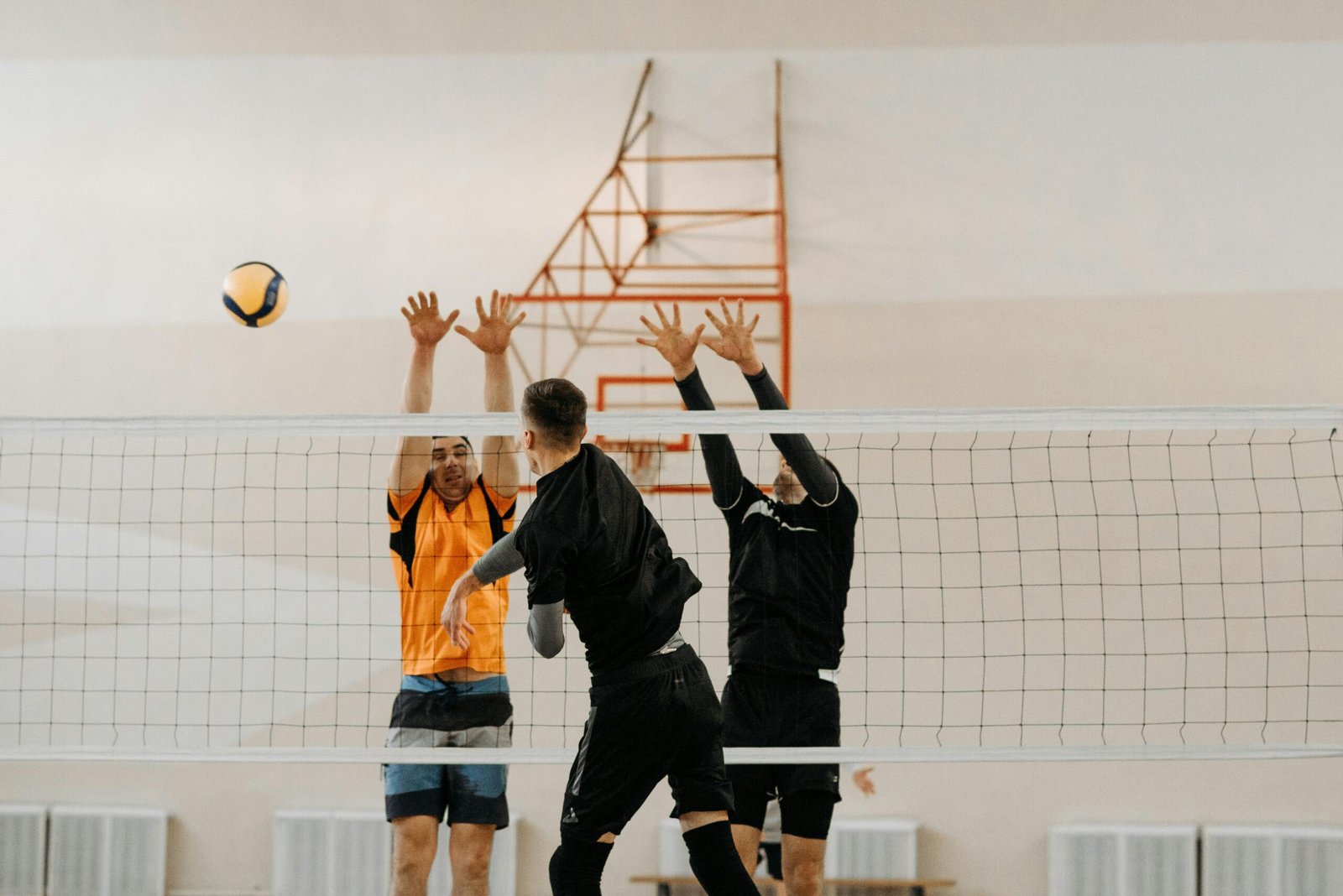In volleyball, the term “ace” is often misunderstood. While many immediately think of a service ace—a serve that lands untouched by the opposing team—the concept of an ace player means something entirely different. Being called the ace is one of the highest honours in volleyball. It represents not just skill, but leadership, responsibility, and the trust of a team.
This guide explores what it means to be an ace in volleyball—both technically and symbolically—looking at how the role functions in real-life teams, how it’s portrayed in popular culture such as Haikyuu!!, and what it truly takes to become one.
The True Meaning of an Ace in Volleyball
In volleyball, the ace refers to the team’s most reliable and dominant offensive player—the one expected to deliver points under pressure. While not an official position like setter, libero, or middle blocker, the ace is a recognised status within a team.
An ace embodies consistency, power, and mental resilience. They are often the player the setter looks to when the team needs to score, particularly in crucial moments such as late sets or when momentum needs to shift.
In short, the ace is:
- The team’s offensive cornerstone.
- The player who performs under pressure.
- The emotional and motivational leader.
Unlike a captain, whose responsibility is leadership and communication, an ace leads primarily through action.
The Role of an Ace Player
An ace can technically play any position, but they are almost always one of the outside hitters or opposite hitters, as these roles provide the most attacking opportunities. The ace’s primary responsibilities include:
- Scoring Points: Delivering consistent kills against the opponent’s defence.
- Carrying the Offence: Becoming the go-to option when the team struggles to score.
- Psychological Anchor: Lifting team morale and composure in tense moments.
- Versatility: Adapting to different sets, blockers, and defensive systems.
- Reliability in Serve Receive: Often staying in during all rotations to stabilise the team.
The ace must combine technical precision with emotional strength. Their presence alone can intimidate opponents and inspire teammates.
The Difference Between an Ace and a Star Player
Not every star player is an ace, and not every ace is the flashiest on the court. The distinction lies in responsibility.
A star player may dominate statistically, but an ace carries the weight of expectation. When the match is on the line, it’s the ace who the setter trusts most.
An ace isn’t just measured by kills or spikes—they’re defined by when they perform. They are the player who delivers in set point situations, who demands the ball when others hesitate, and who maintains composure no matter the score.
The Mindset of an Ace
Being an ace is as much about mentality as it is about physical ability. Top aces display:
- Confidence, not arrogance: Believing in their ability to finish plays.
- Composure: Remaining calm even after mistakes or missed points.
- Adaptability: Adjusting to blockers and varying attack angles.
- Leadership through performance: Setting an example with every play.
- Emotional maturity: Accepting both praise and pressure equally.
The ace carries a quiet burden—the expectation to always deliver. Yet, this pressure is what fuels their greatness.
How Anime Like Haikyuu!! Popularised the Concept of the Ace
The term “ace” became especially popular in mainstream culture through Haikyuu!!, the Japanese volleyball anime and manga series by Haruichi Furudate. In the series, each team’s ace is depicted as their symbolic core—a player whose strength, reliability, and drive to score define their identity.
The protagonist, Shoyo Hinata, despite being undersized, dreams of becoming an ace like his idol, the “Little Giant.” His journey redefines the ace archetype—not purely through height or power, but through heart, determination, and teamwork.
Other notable Haikyuu!! aces include:
- Asahi Azumane – Karasuno’s quiet but powerful ace who struggles with confidence before rediscovering his strength.
- Wakatoshi Ushijima – Shiratorizawa’s left-handed powerhouse, representing the traditional, unstoppable ace.
- Kotaro Bokuto – Fukurodani’s energetic ace, known for his mood swings but unmatched offensive talent.
Haikyuu!! showcases that the ace role goes beyond statistics—it’s about resilience, belief, and carrying your team in spirit as much as on the scoreboard.
The Ace in Real-Life Volleyball
In professional volleyball, the concept of the ace is less symbolic but no less real. Every elite team has its go-to attacker—the player expected to execute under pressure.
Some examples include:
- Wilfredo León (Poland/Cuba): A global volleyball icon renowned for his attacking dominance and serving power.
- Zhu Ting (China): The face of Chinese volleyball, a dependable outside hitter and Olympic MVP.
- Ivan Zaytsev (Italy): Known for his fiery leadership and explosive attacks from both the front and back row.
- Gabi Guimarães (Brazil): A model of consistency and emotional balance for her national team and club side VakıfBank.
These players embody the ace mentality—unwavering, skilled, and willing to take responsibility when it matters most.
The Skills That Define an Ace
Becoming an ace requires mastery across multiple areas of the game. These players are rarely one-dimensional.
1. Offensive Power
Aces possess explosive hitting power and precise shot selection. They can spike cross-court, down the line, or off the block with equal confidence.
2. Ball Control
Aces often remain in serve receive rotations, making them dependable passers who stabilise the team’s first contact.
3. Tactical Awareness
They understand the opponent’s blocking tendencies and adjust their hitting angles in real time.
4. Mental Strength
When errors occur, aces recover quickly and keep their focus sharp. They turn mistakes into motivation rather than frustration.
5. Consistency
Perhaps their defining quality. Coaches trust aces because they perform consistently across all sets and against top-tier defences.
How to Develop Into an Ace Player
Becoming an ace doesn’t happen overnight—it’s earned through deliberate practice, discipline, and a relentless mindset.
1. Refine Your Technical Skills
- Focus on mastering the approach, arm swing, and timing.
- Train for precision over raw power.
- Work on both front-row and back-row attacks.
2. Strengthen Your Mental Game
- Embrace high-pressure situations in training.
- Learn to reset quickly after mistakes.
- Study professional players and visualise their composure.
3. Improve Physical Conditioning
- Prioritise vertical jump training, agility, and core stability.
- Maintain consistent conditioning to avoid fatigue during long rallies.
4. Communicate with Your Setter
The connection between setter and ace is crucial. Build chemistry through repetition, feedback, and trust.
5. Lead Through Performance
Let your actions define your leadership. Dive for every ball, fight for every point, and show calmness even in defeat.
How Coaches Identify a Team’s Ace
Coaches typically look for players who combine technical skill with psychological resilience. The ace doesn’t need to be the tallest or strongest, but they must be reliable.
Signs of a potential ace include:
- Performing well under stress.
- Maintaining consistency across matches.
- Inspiring confidence in teammates.
- Seeking accountability rather than avoiding it.
Many coaches also note that the ace is the first player opponents prepare to defend against—because they are seen as the most dangerous weapon.
The Psychological Weight of Being the Ace
Being the ace comes with heavy responsibility. The pressure to perform can be both motivating and exhausting. Even in Haikyuu!!, characters like Asahi Azumane struggle with self-doubt, reflecting the real-world mental strain top players experience.
To manage this, mental training becomes vital. Breathing exercises, visualisation, and confidence routines help aces stay centred during intense competition. Coaches often support them with clear communication and tactical variety to prevent burnout.
The Ace’s Role in Team Dynamics
A good ace doesn’t just score—they make their team better.
- They draw blockers, opening up opportunities for teammates.
- Their presence stabilises morale when momentum swings.
- They bridge the gap between individual excellence and collective performance.
A truly great ace turns their team into a unified force. Their energy, determination, and calm influence spread through every rally.
Lessons from Haikyuu!! and Real Volleyball Aces
Both fiction and reality show that the ace role is defined by attitude as much as ability.
From Hinata’s unyielding energy to Ushijima’s focus and Zhu Ting’s composure, the message is the same: being an ace isn’t about perfection, it’s about responsibility.
Aces make mistakes. They face slumps. They lose matches. But they return stronger, always willing to take the next ball.
Conclusion
An ace in volleyball isn’t just a powerful hitter—it’s the player who embodies trust, leadership, and composure. Whether you’re watching Haikyuu!! or an Olympic final, the ace represents the emotional heartbeat of every team.
They are the ones who rise when the match tightens, who take the final swing when everyone else hesitates, and who inspire through sheer presence.
Becoming an ace means more than learning to score—it means learning to lead.



